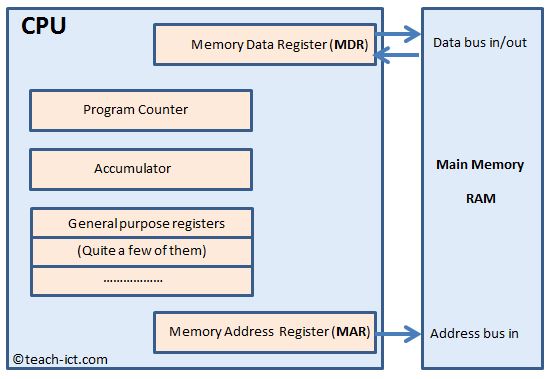5. Registers in a CPU - Accumulator
The diagram below shows the main registers within a CPU.
Accumulator
The Accumulator is used to temporarily store data whilst calculations are being performed within the Arithmetic Logic Unit (ALU)
You need at least one accumulator register to carry out calculations. But to make a programmer's life a bit easier, CPU manufacturers have included quite a few extra general purpose registers to store even more temporary data.
The Von Neumann architecture says that the 'accumulator' has to be available. The accumulator makes it much simpler to write software programs that handle data. It does this by storing temporary data while the program runs.
Also, having an accumulator means that the program can run much faster because the accumulator is a register and, as you already know, registers are the fastest type of memory. Without an accumulator, data would have to be stored in RAM which is much slower to access.
Challenge see if you can find out one extra fact on this topic that we haven't already told you Click on this link: The latest microprocessor

